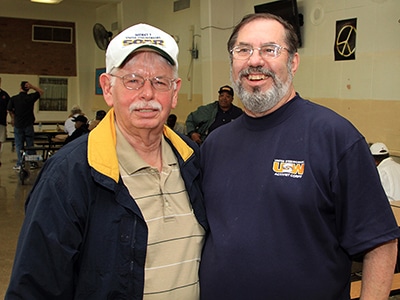February Update from SOAR Director Julie Stein
2024 Election Presents Important Decision for SOAR Members, All Retirees
Last year, unions, including the USW, made significant progress toward electing pro-worker, pro-retiree allies in key gubernatorial, legislative and judicial offices nationwide.
While we can’t possibly list every victory from the last year, I feel it is necessary to highlight a few of the biggest:
- Union-backed candidates were victorious in four special elections in Pennsylvania, which helped secure a new pro-union, pro-retiree majority in the state’s House of Representatives.
- Michigan’s newly-elected, pro-union governor and legislature – the state’s first in nearly 40 years – acted to restore workers’ collective bargaining rights by repealing the state’s so-called right-to-work law and putting an end to the unfair pension tax.
- Wisconsin voters turned out in droves to secure a 4-3 pro-union state Supreme Court majority.
- Minnesota’s pro-worker, pro-retiree legislature and governor, Tim Walz, passed a state budget (HF3028/SF3035) that was hailed as the “most significant worker protection bill in state history.”
- In Ohio, voters defeated Issue 1, which would have raised the threshold for voters to amend the constitution to a supermajority of 60 percent and enacted stricter requirements for getting amendments on the ballot.
- Labor-backed candidates maintained control of Virginia’s State Senate while reclaiming a pro-worker majority in the general assembly for the first time since 2021.
- Our close friend, Governor Andy Beshear of Kentucky, won reelection; and,
- In Pennsylvania and Indiana, we proudly backed close allies who were victorious in their campaigns for local and state offices.
This year presents union members and retirees with another historic opportunity to build upon these victories.
In addition to the critically important presidential election, voters will weigh the decision of who controls Congress, with all 435 U.S. House of Representatives up for election, along with 34 U.S. Senate seats.
Control over 86 legislative chambers will also be decided by voters in 44 states, 11 of whom will choose their next governor.
Eighty-two state supreme court and 216 intermediate appellate court seats will also appear on voters’ ballots this November.
While much attention will be given to the presidential campaign, we must keep in mind that state and federal lawmakers also make decisions which impact our ability to access health care, afford the medications we are prescribed, the availability of various health care services in our communities, and so much more.
By clicking Sign Up you're confirming that you agree with our Terms and Conditions.
Recent News Articles
Want to Learn More?
See how the USW is making a real difference in our communities and our workplaces.

